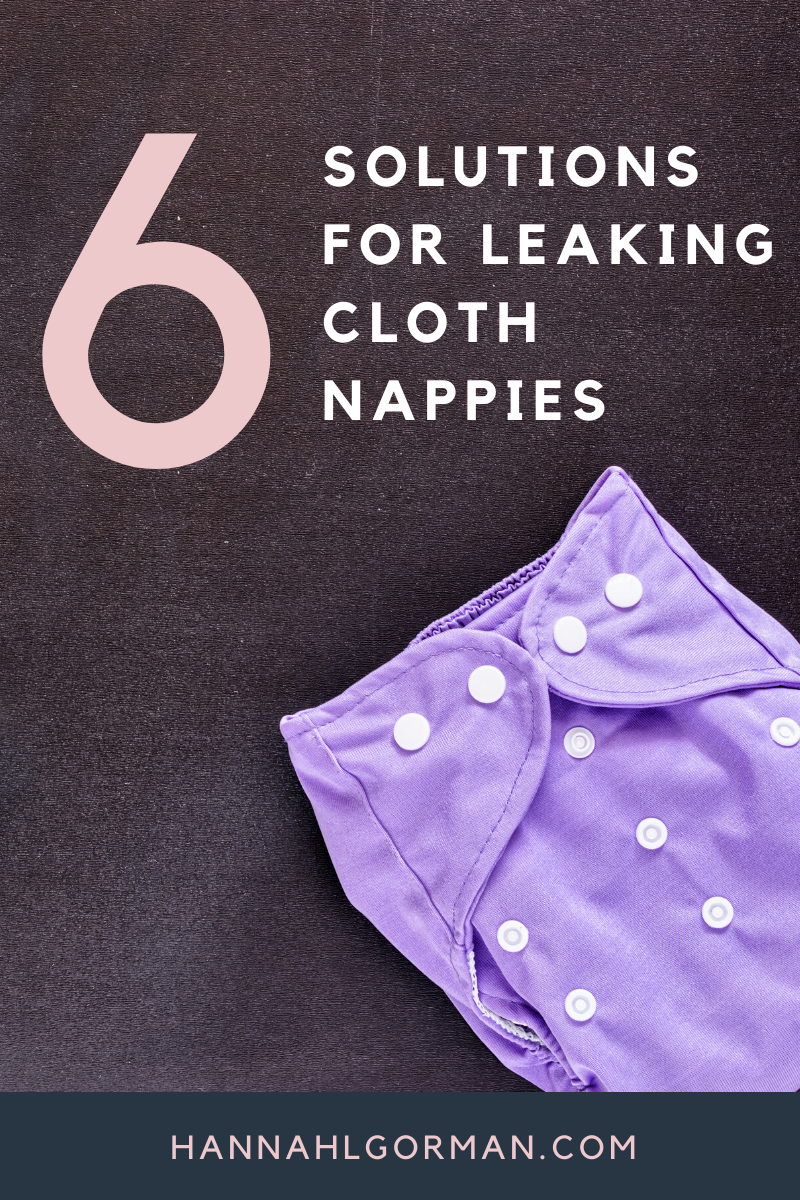6 Reasons your Cloth Nappies are Leaking.
You’ve made the switch the cloth nappies. Yay, well done you for trying to make big changes in your household. How are you finding it?
I do believe cloth nappies are brilliant but it’s doesn’t mean you’ll never have issues. The most common issue I hear of when it comes to reusable cloth nappies is that parents are experiencing leaks. If this happened in disposables you would probably just change the brand or the size you are using. The same goes for cloth. Changing things up a little with help solve things.
Cloth nappies can leak for a number of reasons. Either the fit or the absorbency is wrong. Your experiencing compression leaks, or your not changing often enough.
All of these problems are easy to solve. Once you’ve identified the problem it’s a simple matter of tweaking what you do and what you have to suit your babies needs. The good news if you shouldn’t have to buy anything new.
6 reason’s your cloth nappies are leaking and how to fix them.
Pin me for later….
GEt The Fit of your cloth nappy right.
The fit is something you’ll get better at with a few goes. The secret is to understand that reusable cloth nappies fit differently to disposables. It’s not hard, just different.
Place the nappy lower on babies back than a disposable nappy. A builder bum at this point is fine.
Tuck elastic into babies knicker line. This will give a snug fit without being tight.
Flatten front panel on babies stomach so it sits at the top of their legs nicely. It may feel to high on their belly but that’s okay.
Pull side panel with velcro or poppers from the back, up over babies hips. This makes sure its nice and snug on legs. Then fasten it a little loose on the belly so when they sit up it does not dig in.
If your not sure how tight it should be make sure you can fit three fingers between the nappy and their belly. Then lift their legs to make sure you cannot see any gaps between their legs and the nappy but you should be able to still run your finger easily under the leg gussets. so it’s not digging in.
Also make sure the sizing poppers are folded so you can push your fingers up rather than down, this makes sure any excess material is not causing extra bulk around the legs and therefore not causing gaps.
If your a visual person here’s a couple of good YouTube videos that do a good show and tell of a fit.
https://www.youtube.com/watch?v=OVfbrakUzvs
https://www.youtube.com/watch?v=Dx0DY_EbkSM
2. Using the right inserts.
If your babies cloth nappy is leaking have a little feel of the absorbent part of the nappy. Is is saturated? If so you baby needs more absorbency, if not go back to the fitting stage above.
I like to add extra absorbency with Little Lamb Bamboo Inserts these are really absorbent and slim so your not going to notice much more bulk in the nappy. They are also good value you for money at 5 for £9.
Many cloth nappies will come with two inserts and suggest you add the second if you need it but I find this makes the nappies huge with two full sized inserts, making fitting the nappy harder.
3. Are you Changing your cloth nappies
often enough?
Okay, so you’ve had a leak, you check how wet the nappy is like I suggested above, its soak so you think you must need more absorbency! But wait, how long has the nappy been on for?
Cloth nappies generally need changing slightly more often than their single use counter parts. Every 2-3 hours for a newborn and 3-4 hours for an older baby. This is recommended by the NHS for babies in disposables or cloth nappies but as disposables create a false feeling of dryness we tend to change them less often.
Parents that are used to disposables lasting for as long as they need them, up to 12 hours as advertised, are often disheartened when a cloth nappy is full and leaks after 3-4 hours. Of course there are situations when you want your nappies to last this long or longer. Long car journeys, naps, or overnight in which case adding extra absorbency is answer but in general if your nappies are leaking after this point it is just a case of changing a little more frequently.
4. Compression leaks.
Compression leaks will only happen if your using micro-fiber inserts. Micro-fiber works like a sponge. It absorbs really quickly but once it’s full if it’s compressed, like for example in a car seat or a sling, it will squeeze the moisture out and could result in leaks.
Some parents like using micro-fiber if their babies do big wees (as it is a very quick absorber) but usually pair it with something more absorbent like bamboo. I personally find it pointless for us as most inserts that come with your nappy, Baba and Boo for example, have a bamboo cotton, or bamboo micro-fiber blend (cotton and micro-fiber being the quick absorbers, bamboo being slower but holds more) meaning they are doing the job of both.
5. Your child is holding their wees and then flooding.
AKA could it be time to think about potty training? Are they showing any other signs that they could be ready?
Before my daughter started potty training I noticed her nappies would often be dry, until she did one huge wee and flooded the nappy. This mainly happened first thing in the morning, either soaking her night nappy before I changed it or the first nappy of the day would need changing almost instantly (a real bugger when your trying to run out the door in time for nursery). I therefore started offering her the potty. Sitting her on it in the morning while she watched a little telly.
6. Damaged nappies or product build up.
If you suspect your nappies are leaking through the water proof layer inspect the PUL (waterproof layer). This can become damaged with age. You can often see any damage but if your still unsure try out The Nappy Ladies Tea Towel Test.
Once you have elminated the above problems it’s also worth checking you do not have product build up. This can be from using too much detergent, which is easy to identify if you nappies smell heavily of detergent and/or you can see soapy suds still in the washing machine when it is running its rinse cycle. Excess detergent can build up and affect absorbency.
It could also be cause by using other products such as fabric softens. These are not recommended for cloth nappies as they can coat fibers and also affect absorbency.
Running a simple strip wash, of clean nappies on a long, 60 degree cycle with NO detergent, adding extra rinses if you still is bubbles in the machine should help rectify this.
Nighttime leaking.
My answer to everything is basically Motherease. Look no further than them. However this one takes a lot more talking about so I’ve written a whole post for you, Cloth Nappy Night Time Solutions.
Has this helped you with your leaking problems?
If not why not drop me a message and we can talk about what could be happening.
I’m always around on Instagram. Find me at @hannahlgorman
Much love.
Hannah xx
related articles for you…
Inside my Zero Waste Changing Bag.
Things I wish I had known before starting with Cloth Nappies.
How to be an Eco-Friendly Mum.
















How many cloth nappies will you need to go full time and ditch the disposables for good?